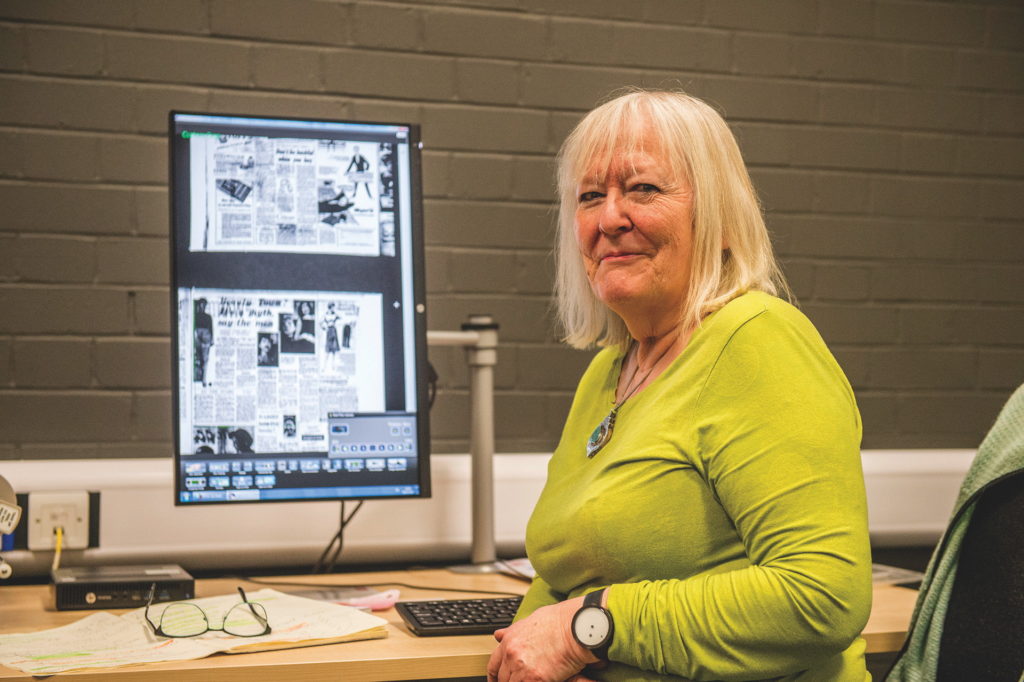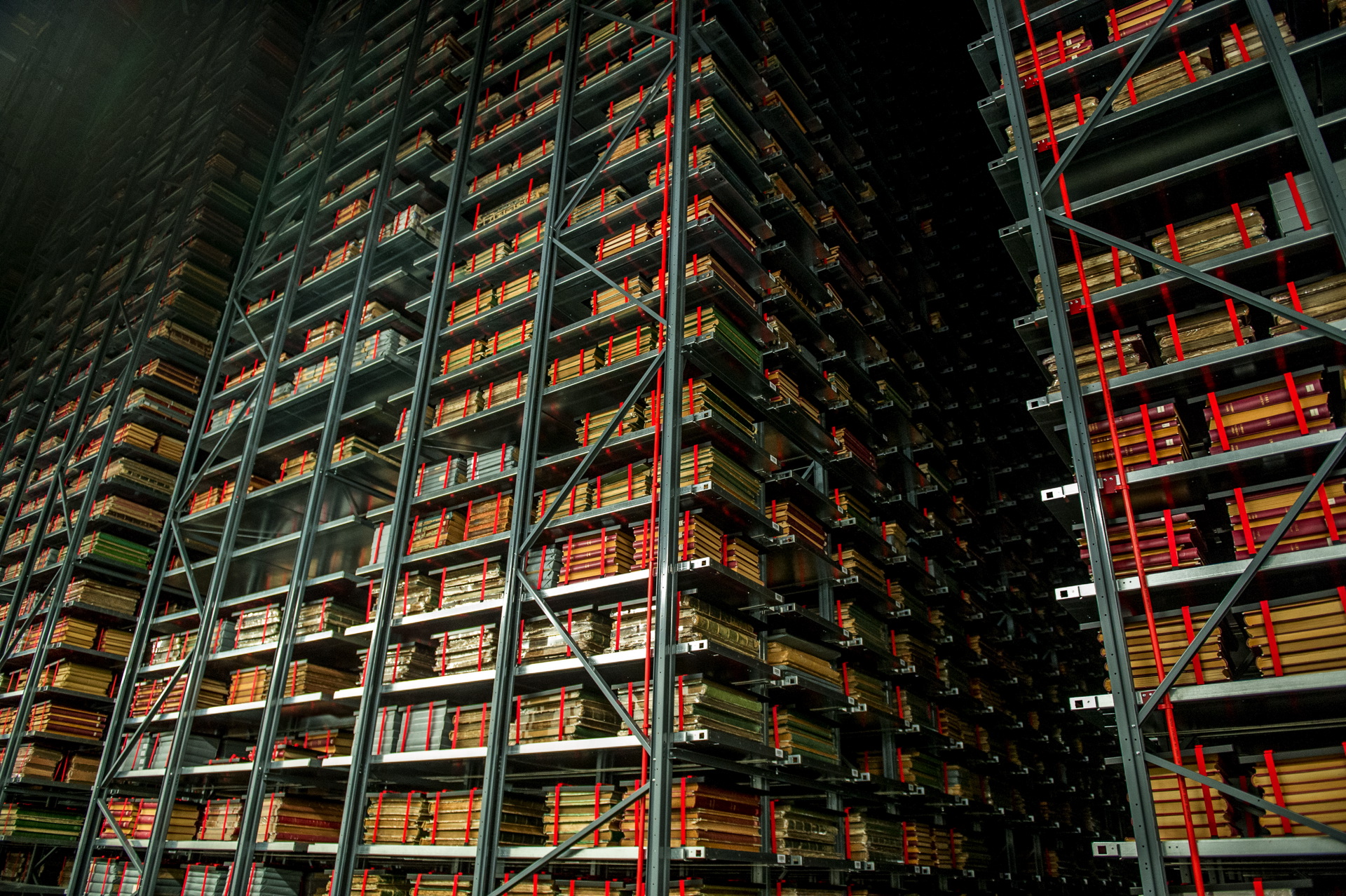Shelf life
With a copy of every book published in the UK and newspapers going back to the 18th century, the British Library at Boston Spa is a treasure trove for researchers
In 2014 the head of English Heritage Simon Thurley picked 10 buildings that have changed the face of England, including three in the north – Rievaulx Abbey in North Yorkshire, and both A&G Murray Mills and Liverpool Road Railway Station in Manchester.
The British Library in Boston Spa is not so architecturally impressive – the former munitions factory is so drab visitors often mistake the local prison for it.
But the former Royal Ordnance site 10 miles north east of Leeds, near Wetherby, is just as significant as more historical buildings, because it contains the UK’s national newspaper collection, copies of every book published, music scores and sound recordings. For researchers in its 70-seat reading room, it provides a breathtaking window on the past.
Each item can be retrieved by giant robotic cranes that whizz up and down the gangways
Viv Lever from York is one. She is writing a book about her late father Ralph Cooper, a journalist and publicist in the 1940s-1960s, and is collecting articles he wrote. “My Life in the Stars is my working title. It draws on 83 autobiographical pages of my father’s that suddenly came to an end when he wrote: ‘And then I went to Milan to publicise The Italian Job.’
“My dad interviewed and corresponded with some extremely well-known stars such as Jayne Mansfield, Sophia Loren, Diana Dors and Peter Sellers.
“The library is wonderful. Firstly, it’s a pleasant place because it’s very modern. I can order newspapers and they are available to view 36-48 hours later. For those papers that are now digitised I locate the article using the digital microfilm reader, then crop it and email it to myself within seconds. It’s easy.”
Following the Royal Ordnance closure in 1958 the site’s 32 buildings were turned into the National Lending Library for Science & Technology, serving research industries. But with the main British Library site at St Pancras in London approaching capacity the Boston Spa site was absorbed in 1973 to provide new shelf space. Storage problems in London increased in 1983 when the National Sound Archive was added to the British Library collection.
In 2013 the British Library moved the national newspaper collection from Colindale, North London, to a purpose-built storage building at Boston Spa. The transfer was accompanied by major refurbishment and the introduction of full reader registration at Boston Spa to give researchers access to print and microfilmed newspapers dating back to the 18th century.
“We now get a lot more visitors,” says David Clayforth, who manages the reading room. “They include students from many universities across the region, local people trying to piece together their family history, sports and music researchers and writers.”
Clayforth, who has worked at Boston Spa for 35 years, recalls one of his favourite moments from three years ago. “We aided the British Legion, who became aware that we held the only copy of a newspaper that featured the images of some fallen soldiers during the First World War. Even though we could not bring out the item as the images were fading we were able to take some iPad images that the British Legion were delighted with and could use.
“The three million sound recordings we hold via our Sound and Moving Image Catalogue include the only recording of TS Elliot and, speaking about her time in the Crimea, Florence Nightingale.
“We get to know our users personally and can offer them support on how best to use our catalogue. It’s nice to hear of people who have used the facilities and who have subsequently had their work published.”

There are currently around 340 million newspaper pages stocked at Boston Spa. That increases quickly as there are approximately 1,200 titles published each week across the UK. Around 17 million pages are now digitised and available online via the British Newspaper Archive at home for a reasonable fee.
Once a newspaper has been scanned it is returned to a giant warehouse, the National Newspaper Building, which holds 33km of newspapers stacked on steel shelves 24 metres high by 24 metres wide and 64 metres long. To ensure optimum preservation of the stock the building has a constant temperature of 14C, humidity of 55 per cent and a low oxygen environment of 15 per cent. This helps eliminate fire risks.
Each item is individually barcoded so any request from the public makes it possible for them to be retrieved by giant robotic cranes that whizz up and down each gangway. “They remind me of the last moments of Raiders of the Lost Ark where they wield the Ark off into the vast archives,” says British Library press officer Ben Sanderson. “In our case we can retrieve all our items.
“This is a spectacular room. Obviously we can’t publicly open it but we are intent on increasing awareness of it, whilst also utilising new technology to improve access to its contents to ensure that more people use the information.”
As yet no date can be given for when every page will be available digitally but the figure is significantly up from six million five years ago.
According to image technician Paul Wilkinson, who has worked at Boston Spa for 27 years, the large leap is because of “the never ending improving situation in the digitising world. We are always trying to keep one step ahead in the technology. Depending on the size, age and type of machine that we employ to digitise each page it can cost anything from £20,000 up to £100,000.
“But in addition there have also been massive advances in optical character recognition so that we can now offer a search facility which is close to 90 per cent accurate and improving annually.
“We are now also scanning 90 per cent of PhD theses. We have 455,459 in total. Universities inform us that consequently lots more people are downloading and reading theses than was the case in the past when anyone interested had to actually visit the university.”
Many other organisations use the library to digitise their archives, including the Royal Society of Chemistry and Royal Society. Others expected to start doing so in the near future are the Ministry of Justice and NHS.
“What we have here at Boston Spa is much of the collective memory of the nation going back hundreds of years and containing every big national scandal, disaster and defeat, combined with details of the everyday lives of people,” says Sanderson. This is a real treasure trove.”
Six million searches are generated annually by the British Library online catalogue.
Nearly 400,000 people visit the British Library reading rooms at Boston Spa and London annually.
Three million items are added each year to the British Library collection.
Around 50,000 theses are downloaded every month by researchers worldwide. The oldest listed is a 1770 Edinburgh thesis in Latin.
If you were to see five items at the British Library each day, it would take in excess of 80,000 years to see the whole collection.

Leave a reply
Your email address will not be published.